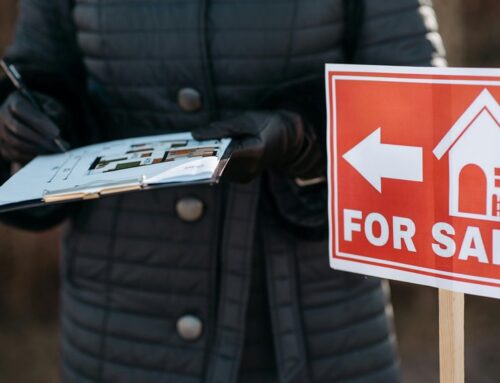It’s interesting how I found myself discussing the challenges of selling a shared home just after helping a friend through the process. I realized that many people struggle with disputes when it comes to such sales. There are effective strategies we can adopt to minimize these conflicts, and grasping these can make a significant difference. Let’s explore how to navigate this complex situation and guarantee a smoother journey for everyone involved.
Selling your home for cash? Learn expert strategies to maximize your offer, close quickly, and avoid hidden fees.
Read the Full Guide Now → Click Here
Communicate Openly and Regularly
Although it might feel uncomfortable at first, communicating openly and regularly is essential when selling a shared home. I’ve found that keeping the lines of communication clear helps prevent misunderstandings down the road. Whether it’s discussing potential buyers, pricing, or showing schedules, I make it a point to check in frequently. It’s not just about sharing information; it’s about building trust. I encourage you to share your thoughts and concerns, too. When both parties feel heard, it fosters a collaborative spirit, making the process smoother. Remember, open dialogue can turn a stressful situation into a more manageable, even enjoyable, experience.
Set Clear Expectations From the Start
When selling a shared home, I’ve found it’s essential to set clear expectations right from the start. Defining ownership responsibilities and establishing communication guidelines can prevent misunderstandings later on. This way, everyone knows their role and how to stay in touch throughout the process.
Define Ownership Responsibilities
Defining ownership responsibilities from the outset is essential for a smooth selling process of a shared home. It helps prevent misunderstandings and guarantees everyone knows their role. I recommend creating a clear outline to communicate these responsibilities effectively.
| Responsibility | Owner |
|---|---|
| Maintenance of Property | Owner 1 |
| Financial Contributions | Owner 2 |
| Coordination of Viewings | Both Owners |
| Legal Documentation | Owner 1 |
Establish Communication Guidelines
To guarantee a smooth selling process, it’s essential to establish communication guidelines early on. I recommend setting specific times for discussions, whether weekly or biweekly, to keep everyone in the loop. It’s also helpful to agree on preferred communication methods—like email, phone, or text. Make certain everyone knows who’s responsible for what, from listing updates to negotiations. I find that regular check-ins help prevent misunderstandings and keep emotions in check. Remember, clear expectations foster trust, and that’s key in avoiding disputes. So, let’s prioritize open communication from the start to guarantee a successful home-selling experience together.
Agree on a Fair Pricing Strategy
Agreeing on a fair pricing strategy can be vital for a smooth sale, especially since emotions often run high in shared home situations. I recommend starting by researching comparable properties in your area to establish a baseline price. It’s also important to have open discussions about each party’s financial expectations and any personal attachments that may affect pricing. By approaching the conversation with empathy and a willingness to compromise, you can find a price that feels fair for everyone. Remember, transparency is key; sharing market data helps build trust and guarantees everyone feels included in the decision-making process.
Establish a Timeline for the Sale
When selling a shared home, I find it essential to establish a clear timeline for the sale right from the start. Setting specific deadlines helps keep everyone on track and prevents misunderstandings. Plus, regular communication throughout the process guarantees that all parties feel informed and involved.
Set Clear Deadlines
Setting clear deadlines is essential for a smooth home sale, as it helps keep everyone on the same page and prevents misunderstandings. I’ve found that establishing a timeline not only creates accountability but also reduces stress. Here’s what I recommend including in your deadlines:
- Decide on an initial listing date.
- Set a timeline for showings and open houses.
- Agree on a review date for offers.
- Determine a closing date.
- Plan for post-sale responsibilities.
Communicate Regularly
Having clear deadlines is just the first step; it’s equally important to maintain open lines of communication throughout the selling process. I’ve found that regular check-ins can help keep everyone on the same page. Whether it’s a weekly call or quick text updates, staying connected reduces misunderstandings. Make sure we discuss any changes in the timeline or unexpected challenges as they arise. Transparency builds trust, and it allows us to address concerns before they become bigger issues. Plus, sharing our thoughts and feelings about the sale can foster collaboration, making the entire experience smoother and more efficient for everyone involved.
Divide Responsibilities and Tasks
To guarantee a smoother selling process, it’s crucial to divide responsibilities and tasks clearly among all parties involved. I’ve found that doing this helps prevent misunderstandings and keeps everyone focused. Here’s a quick breakdown of tasks to take into account:
- Market research: Who’s responsible for analyzing current trends?
- Property staging: Assign someone to handle decluttering and cleaning.
- Showings: Decide who will be available for potential buyers.
- Negotiations: Choose a lead negotiator for offers.
- Documentation: Verify someone is in charge of all paperwork.
Consider Hiring a Neutral Third Party
After assigning responsibilities, it can be helpful to bring in a neutral third party. This could be a real estate agent or mediator who’s not emotionally invested in the property. Their objective perspective can streamline communication and help us navigate disagreements. They’ll guarantee that everyone’s voice is heard and facilitate discussions, keeping us on track. Plus, having someone unbiased can reduce tension and make the process smoother. I’ve found that involving a neutral party often leads to better decision-making, as they focus on the facts rather than personal feelings. It’s an investment in a fair and efficient selling experience.
Keep Emotions in Check
While selling a shared home, it’s vital to keep emotions in check, especially since each party likely has personal attachments to the property. I’ve found that managing feelings can prevent conflicts and promote a smoother process. Here are some tips that worked for me:
- Acknowledge feelings: Recognize that it’s normal to feel attached.
- Stay focused on goals: Keep the endgame in mind – a successful sale.
- Communicate openly: Share your thoughts without accusations.
- Take breaks: Step away if emotions run high.
- Seek support: Talk to friends or a counselor when needed.
Document Everything in Writing
Keeping emotions in check is important, but it’s just as essential to make certain that every agreement and decision is documented in writing. When selling a shared home, I always make it a point to jot down everything discussed—whether it’s about repairs, pricing, or timelines. This way, if disputes arise later, I have clear evidence of what we agreed on. It’s not just about protecting myself; it confirms that all parties are on the same page. Trust me, taking the time to document can save a lot of headaches down the road, making the process smoother for everyone involved.
Conclusion
In the end, selling a shared home doesn’t have to feel like walking a tightrope. By keeping lines of communication open and setting clear expectations, you can navigate this journey with ease. Remember, it’s all about collaboration and trust. If you find yourself tangled in emotions or disputes, don’t hesitate to seek help. With the right approach, you can turn what might seem like a stormy sea into a smooth sailing experience for everyone involved.









